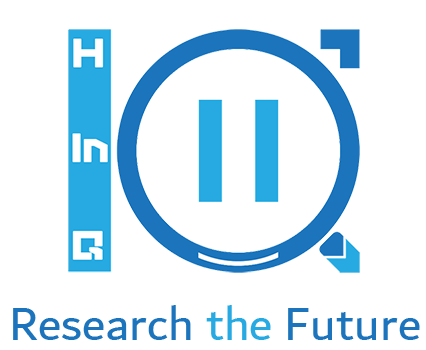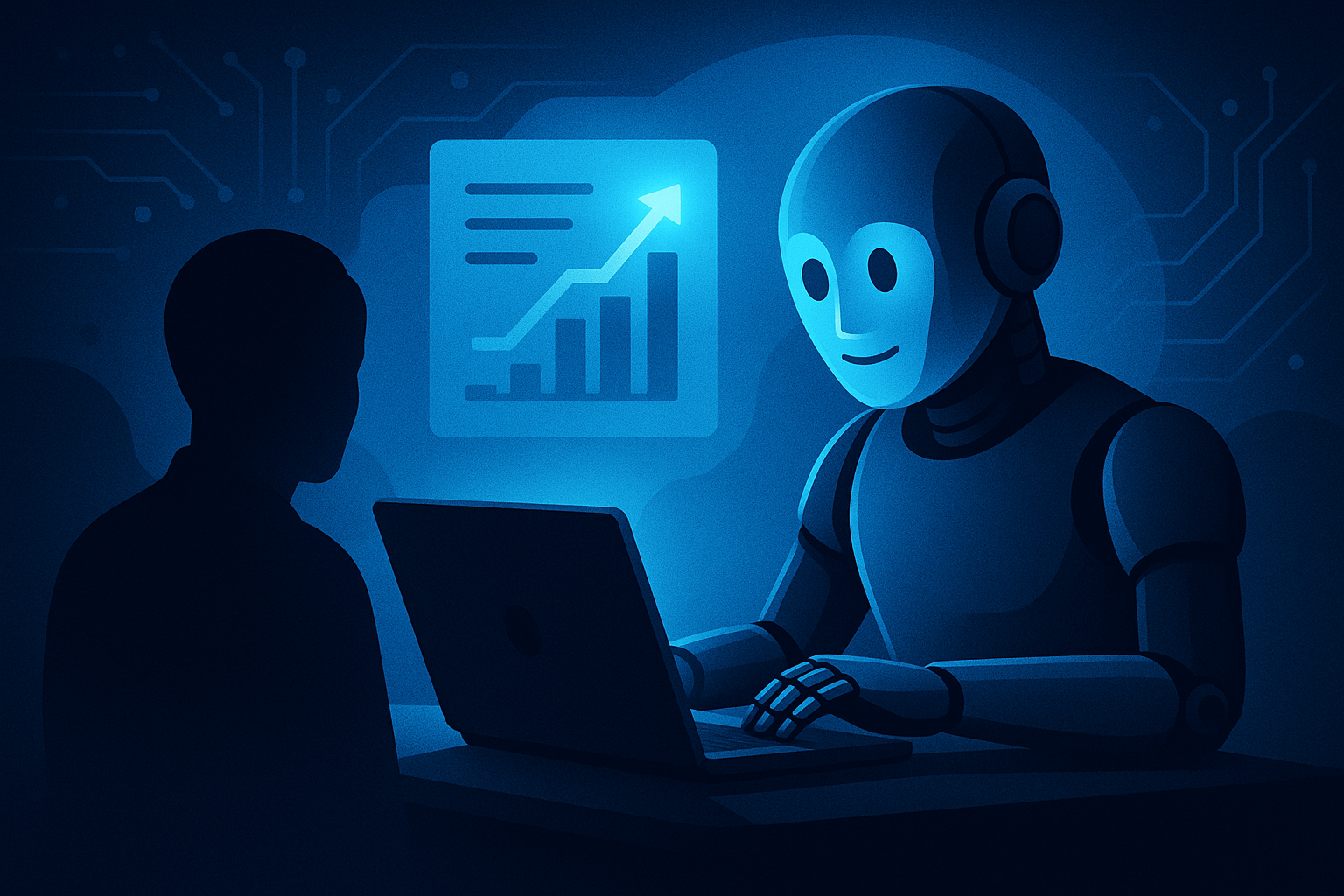Introduction – When Robots Start to Write: Is Your Job Safe?
What happens when machines learn to sell? For decades, marketing copy has been considered a uniquely human skill. It is a craft rooted in emotion, storytelling, and persuasion. But artificial intelligence is challenging that assumption. With the rise of AI copywriters, businesses are now producing entire ad campaigns, emails, and product pages in seconds, not hours.
Tools like ChatGPT, Jasper, and Copy.ai have become fixtures in the modern marketer’s toolkit. They generate engaging headlines, compelling calls to action, and even long-form content, all with input as simple as a prompt. These tools are not just writing. They are learning. Every interaction trains them to optimize language for conversions, tone, and clarity.
This technological leap has sparked both excitement and fear. Marketers and content creators are asking whether machines can truly write better than humans. And if they can, what does that mean for creative professionals?
In this article, we explore the evolution of AI in copywriting, its current capabilities, and where it fits in the future of content creation. Whether you see it as a threat or a tool, one thing is certain. AI is rewriting the rules of marketing.
From Grammar Checks to Genius: The Evolution of AI Copywriting
Artificial intelligence in writing did not begin with full-length articles or sales pages. It started with simple tools like spell checkers and grammar correctors, features that quietly improved accuracy but never challenged the writer’s creativity. Fast forward a few years, and AI is no longer just fixing sentences. It is now crafting them from scratch.
The evolution of AI copywriting has accelerated with breakthroughs in natural language processing (NLP) and machine learning. Early platforms could generate basic product descriptions or headlines. Today’s advanced tools can write persuasive emails, detailed blog posts, and nuanced brand messaging that sounds almost indistinguishable from human work.
This transformation is largely due to the vast data sets AI models are trained on. They have read and analyzed millions of pages of content, learning which phrases convert, what tones resonate, and how to match writing style with audience intent. They are not just mimicking language. They are modeling effectiveness.
For marketers and content creators, this shift presents both a challenge and an opportunity. AI is no longer a simple assistant. It is becoming a collaborator, capable of executing tasks once thought to require human insight.
What Can These Bots Really Do? The Power and Limitations of AI Copywriters
AI copywriters have come a long way from generating random strings of text. Today, they can produce everything from catchy ad headlines and product descriptions to email campaigns and social media captions. Given a prompt and a clear objective, these tools can generate surprisingly effective content in seconds.
One of their greatest strengths is speed. AI can process vast amounts of data and generate multiple variations of copy faster than any human. This makes it ideal for A/B testing, quick campaign iterations, and content production at scale. For marketers under tight deadlines, this is a game changer.
AI is also data-driven. It analyzes what types of words and sentence structures perform best, learning from billions of data points to refine its outputs. This allows for high optimization in terms of conversion rates, engagement, and click-through performance.
However, AI still has its limitations. It often struggles with tone nuance, emotional depth, and cultural context. It may produce content that is grammatically correct but lacks creativity or brand voice. And while it can mimic styles, it does not understand meaning in the same way a human does.
In short, AI excels at generating content, but it still needs human guidance to make it truly resonate.
Humans vs. Machines: Who Writes to Convert Better?
When it comes to driving conversions, the competition between AI and human copywriters is heating up. On one side, you have seasoned writers who understand audience psychology, brand tone, and storytelling. On the other, you have AI tools that process massive data sets to identify what works, often faster and more consistently than humans can.
AI wins in areas where speed, volume, and optimization matter most. It can generate dozens of ad variants in seconds, tailor messages to micro-audiences, and fine-tune subject lines based on real-time performance. These advantages make it invaluable for testing and scaling digital campaigns.
Human writers, however, still hold the edge in emotional resonance and strategic thinking. They can craft narratives that connect on a deeper level, build brand equity, and adapt messaging to complex or sensitive topics. Copy that involves subtle persuasion, humor, or cultural insight is often better when written by people.
In many companies, the best results come from combining both. AI handles the heavy lifting, producing variations, testing language, and speeding up workflow. Humans refine the voice, ensure alignment with brand values, and bring emotional intelligence to the final product.
The winner? It is not a fight. It is a partnership with high-impact potential.
The Copy Game Changer: How Brands Are Using AI to Scale Fast
AI is not just helping brands write faster. It is changing how they scale their content strategies. For many marketing teams, AI has become the key to producing high volumes of copy without compromising on performance. This has opened up new possibilities for growth and experimentation.
Brands are using AI tools to generate ad campaigns, product descriptions, and SEO content at a speed that was previously unthinkable. Startups and large enterprises alike are running hundreds of tests across different audiences and platforms, using AI to instantly adjust tone, format, or messaging based on performance data.
For example, e-commerce companies use AI to automatically write product pages tailored to different buyer personas. Email marketers deploy AI to create dynamic subject lines and body copy that personalize content for each recipient. Even creative teams are leveraging AI for initial drafts, freeing up time to focus on higher-level strategy and creative direction.
The results are measurable. Companies report faster go-to-market times, lower content production costs, and increased engagement across channels. When used strategically, AI is not just efficient. It becomes a growth engine.
Rather than replacing creativity, AI is helping marketers expand their impact and execute campaigns at a pace the market now demands.
Will AI Replace Copywriters or Just Make Them Superhuman?
The rise of AI copywriting has sparked a growing concern among content professionals: is this the beginning of the end for human writers? The short answer is no. While AI is rapidly changing the landscape of content creation, it is not here to replace humans. It is here to augment their capabilities.
AI excels at tasks that are repetitive, data-driven, and time-sensitive. It can generate first drafts, test variations, and scale messaging across platforms with ease. But when it comes to crafting emotionally resonant stories, aligning content with deep brand identity, or navigating cultural nuance, human insight is still essential.
What we are seeing is the emergence of a hybrid model. Marketers and copywriters are using AI as a creative partner, a productivity booster, and a testing engine. The result is faster turnaround times, broader campaign reach, and more room for strategy and innovation.
Rather than fearing replacement, forward-thinking professionals are embracing the shift. They are learning how to prompt, refine, and collaborate with AI tools to produce content that is both efficient and effective.
The future of copywriting is not human or machine. It is the synergy of both, where AI enhances creativity instead of competing with it.
Meta Description:
Ressources:
- https://openai.com/research
- https://www.jasper.ai
- https://hbr.org/2022/06/how-ai-is-changing-the-way-companies-create-content
- https://www.forbes.com/sites/forbesagencycouncil/2023/04/21/the-growing-role-of-artificial-intelligence-in-marketing/
- https://h-in-q.com/analytics/



